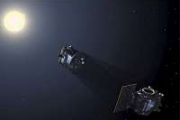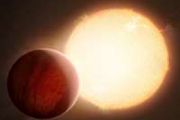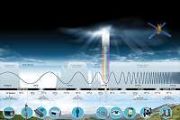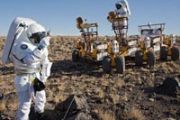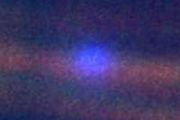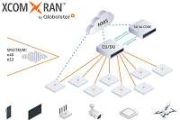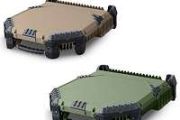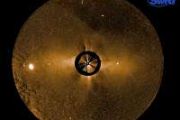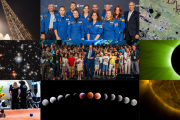
Copernical Team
Eutelsat Quantum liftoff
 Video:
00:00:49
Video:
00:00:49
The first flight of Ariane 5 in 2021 delivers two satellites including the ESA-backed telecommunications satellite Eutelsat Quantum into space.
Ariane 5 launches pioneering reprogrammable telecommunications satellite
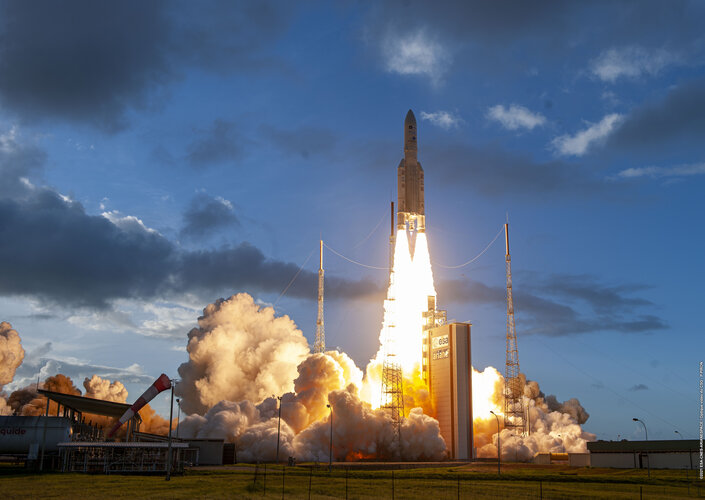
Europe’s Ariane 5 has delivered two telecom satellites Star One D2 and Eutelsat Quantum into their planned transfer orbits.
Ariane 5 on the launch pad
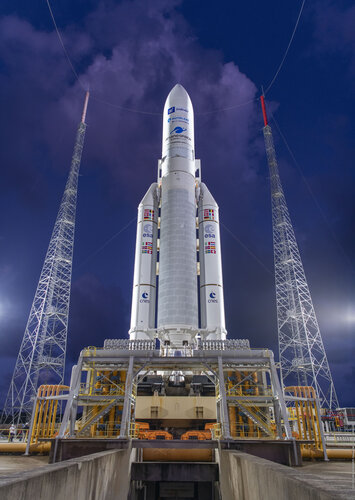 Image:
Ariane 5 is poised for liftoff on flight VA254 at Europe’s Spaceport in French Guiana
Image:
Ariane 5 is poised for liftoff on flight VA254 at Europe’s Spaceport in French Guiana Apollo 11 ascent stage may still be orbiting the moon

James Meador, an independent researcher at the California Institute of Technology, has found evidence that suggests the Apollo 11 ascent stage may still be orbiting the moon. He has written a paper outlining his research and findings and has posted it on the arXiv preprint server.
In 1969, NASA astronauts Neil Armstrong and Buzz Aldrin made history when they landed a craft successfully on the moon. After more than 21 hours on the surface, the astronauts blasted off the surface in a part of the Eagle lander called the ascent stage. They soon thereafter rendezvoused with Michael Collins in the command module which carried them back to Earth. Before departing for Earth, the ascent stage was jettisoned into space—NASA engineers assumed that it would crash back to the moon's surface sometime later. Meador reports that the ascent stage may not have crashed into the moon after all and might, in fact, still be orbiting the moon.
Meador began his investigation by considering whether it might be possible to find the ascent stage, which he assumed would be on the surface of the moon.
Russia blames space station lab incident on software failure

China's space propaganda blitz endures at slick new planetarium

China has opened the doors on what it bills as the world's largest planetarium, a slick new Shanghai facility showcasing the nation's recent extra-terrestrial exploits while notably downplaying those of space pioneers like the United States.
Beijing has spent much of this year bombarding the public with news of the country's rising space prowess, part of a larger propaganda blitz highlighting Chinese achievements under the ruling Communists to mark the party's 100th anniversary.
In recent months, China has landed a spacecraft on Mars, set loose a rover to explore it, and sent the first astronauts to a Chinese space station.
Scale-model replicas of spaceships from these and other missions figure prominently at the new Shanghai Planetarium, along with paeons to China's rapid scientific advancement, and clips of President Xi Jinping addressing the nation's taikonauts.
"This year we had several astronauts go to space, which is a source of pride for China," said a woman surnamed Zhou, who brought her young daughter.
Week in images: 26 - 30 July 2021
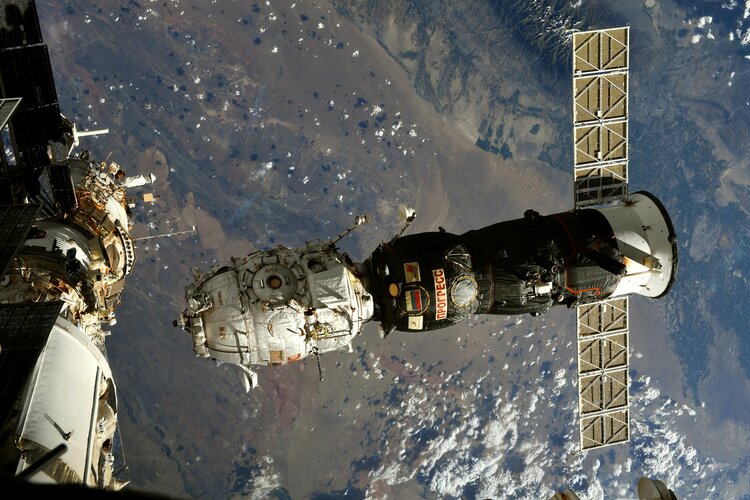
Week in images: 26 - 30 July 2021
Discover our week through the lens
World's first re-progammable commercial satellite set to launch

The European Space Agency will on Friday launch the world's first commercial fully re-programmable satellite, paving the way for a new era of more flexible communications.
Unlike conventional models that are designed and "hard-wired" on Earth and cannot be repurposed once in orbit, the Eutelsat Quantum is based on so-called software-defined technology that allows users to tailor the communications to their needs—almost in real-time.
"When a satellite is launched, demand and markets can change over time," Elodie Viau, the agency's telecommunications and applications director, told AFP recently.
"A satellite that is not 'fixed' and can adapt to customers gives us better prospects."
A successful launch would pave the way for mass production of the satellites, which have so far been one-offs.
The Quantum will be part of the payload for an Ariane 5 rocket due to launch from the Guiana Space Centre in Latin America between 21:00 and 22:30 GMT on Friday.
In addition to the Quantum, to be operated by Paris-based Eutelsat, the rocket will also deploy a conventional satellite for Brazil's Embratel.
Because it can be reprogrammed while orbiting in a fixed position 35,000 kilometres (22,000 miles) above the Earth, the Quantum can respond to changing demands for data transmission and secure communications during its 15-year lifetime, ESA said.
Airbus completes integration of 3rd Copernicus Sentinel-2
 Airbus has finished the integration of the Copernicus Sentinel-2C satellite. It is the third of its kind and will now be shipped to Munich to undergo extensive environmental tests to prove its readiness for space. The test campaign will last until March 2022.
The data gathered by Sentinel-2 satellites are used for monitoring land use and changes, soil sealing, land management, agriculture,
Airbus has finished the integration of the Copernicus Sentinel-2C satellite. It is the third of its kind and will now be shipped to Munich to undergo extensive environmental tests to prove its readiness for space. The test campaign will last until March 2022.
The data gathered by Sentinel-2 satellites are used for monitoring land use and changes, soil sealing, land management, agriculture, SwRI team zeroes in on source of the impactor that wiped out the dinosaurs
 The impactor believed to have wiped out the dinosaurs and other life forms on Earth some 66 million years ago likely came from the outer half of the main asteroid belt, a region previously thought to produce few impactors.
Researchers from Southwest Research Institute have shown that the processes that deliver large asteroids to Earth from that region occur at least 10 times more frequentl
The impactor believed to have wiped out the dinosaurs and other life forms on Earth some 66 million years ago likely came from the outer half of the main asteroid belt, a region previously thought to produce few impactors.
Researchers from Southwest Research Institute have shown that the processes that deliver large asteroids to Earth from that region occur at least 10 times more frequentl 













